Bryan Pearson's Blog, page 7
August 17, 2018
Prime Numbers On Back-To-School: How A Retail Phenomenon Is Changing A Retail Tradition

pxhere
Amazon is schooling the retail industry on how to turn one plus one into science. Hopefully, retailers are taking notes.
The one plus one represents the equation of online and offline shopping. The science is how Amazon Prime Day has changed the sum of them for pre-event shopping. Amazon’s annual online sale, which just completed its fourth year, has officially made the back-to-school shopping season earlier.
The marketing technology firm Cardlytics, in its 2018 Back-to-School Spend Report, surmises that Prime Day has pushed up the shopping season by nearly a month. More important: The report finds that Prime Day back-to-school shoppers spend 17% more at brick-and-mortar stores and 16% more at combined brick-and-click stores, compared with shoppers who don’t participate in the event.
A major contributor to the earlier kickoff of the back-to-school shopping season is that other retailers, such as Target, have responded to Prime Day with their own earlier promotions.
In addition to higher sales, however, several studies reveal that how shoppers buy their clothes, backpacks and dorm-room furniture is shifting in important ways that could predict the course of school shopping in years to come.
4 New School Formulas
This is important to retailers because the back-to-school shopping season is the second-biggest spending period of the year. Families with kids in elementary through high school plan to spend an average of $685 each on back-to-school purchases this year, according to the National Retail Federation. College students and their parents are looking at an average of $942 each.
Following are four ways their back-to-school shopping is significantly changing.
Crash course. The fact that Amazon.com crashed repeatedly on Prime Day indicates many back-to-school shoppers aren’t waiting to pull last-minute all-nighters. More are in fact buying exclusively online. From 2015 to 2017, the percentage of shoppers who concentrated all of their back-to-school shopping online rose, to 21.2% from 14.9%, according to Cardlytics. The share of shoppers who combined online and in-store shopping declined slightly in the period, to 5.5% from 6.1%, while brick-and-mortar shoppers slipped to 73.3% from 79% in the same period.
2. Longer equations. An earlier kickoff of a shopping season often leads to a more lucrative one. Look at it this way: If parents were planning to direct nearly half (40%) of their back-to-school spending to Amazon Prime Day, then they have a full four to five weeks to meet their budgets, and be tempted to exceed them. The logic is that a longer spending period diminishes the effects of that spending on the overall budget. According to Deloitte’s annual back-to-school survey, those who plan to begin their back-to-school shopping before August spend about $100 more than shoppers who get a later start.
3: New stuff. The added time in which to complete back-to-school shopping also opens up opportunities for new purchase considerations, from coffee shop gift cards to bicycles. This potential tendency to see everyday items as school-life requirements is more likely among college students, as the prospect of dorm-room living looms larger. Previously un-collegiate products, like spice racks, will suddenly take on a campus-life sheen (gotta dress up that microwave popcorn).
4: Uniform spending in style. Back-to-school shoppers plan to spend most of their budgets on clothing — nearly $237 on average, according to the National Retail Federation. While this line item hasn’t much changed, it implies that big-ticket tech purchases, such as smartphones, tablets and laptops, are no longer saved for back-to-school season. These items have become as much a part of the household as the refrigerator, so deep discounts before school aren’t as necessary. Further, the amount of money earmarked for back-to-school apparel, combined with online school spending, demonstrates an increased confidence in buying clothes online (thanks in large part to Amazon).
Retail Homework
As Amazon rewrites parts of the back-to-school shopping list, large and small retailers are learning from it. Some key lessons from Prime Day:
Online shouldn’t subtract offline. There’s a reason even Amazon is opening physical stores. Shoppers still spend most of their school budgets at brick and mortar, but the percentage is slipping. Traditional retailers can boost those in-store features that still matter to shoppers by combining them with digital experiences. Walmart, with its eye on student spending, in June added a 3-D Virtual Shopping Tour expressly for small apartments, living spaces and dorms. In July it introduced Buy the Room, a complete selection of furnishings for dorms or apartments, in five curated looks.
Think outside the desk. If longer back-to-school shopping periods encourage spending outside of traditional school categories, then retailers should be poised to take advantage of cross-sell opportunities. Partnerships with unlikely merchants — think salons that set up pop-up makeover shops, fitness centers that hold pre-college workout consultations and area cooking stores that host healthy cooking classes — would encourage additional visits and spending. Cooking-class students, for example, would be more likely to buy juicers or frying pans on the spot.
Ship to the campus store. Retailers would do well to graduate the buy-online, pick-up-in-store option to an option that lets consumersbuy online and pick up at a store near their campus. The choice would make minimal (if no) difference to retailers in terms of shipping, yet save students and their families a lot of packing time and schlepping. Plus, once they are in that near-campus store to pick up those items, the families are likely to buy more. Shoppers who buy online and pick up in a store at least twice in a year purchase more items, once in the store, 51% of the time, according to new research from OrderDynamics. These consumers spend an average of $40 more on unplanned purchases.
For retailers, and students, that’s pretty simple math. But the addition of the online factor makes calculating customer value more of a blend of science and art. Retailers have long kept up with the science; the most creative of them will master the art.
This article originally appeared in Forbes . Follow me on Facebook and Twitter for more on retail, loyalty and the customer experience.
August 9, 2018
Reinventing The Storefront: How 3 Tenacious Retailers Are Doing It

(AP Photo/Jacquelyn Martin, File)
What do dog toys, chamomile tea and used elliptical machines have in common, other than qualifying as scavenger hunt objects? When everything is done right, they are the fruits of happy in-store experiences.
Online retail sales may be rising — 10% in the 12-month period ended June 30 — but people still like to root around in physical stores for pet supplies, exercise equipment and many other things. Nearly two-thirds of consumers, 65%, prefer to shop in stores, research shows.
But why? In part it’s because shoppers like to see and touch products before buying them, but it’s also because they relish the opportunity to have gratifying experiences. It’s this second reason that presents an ongoing challenge for retailers trying to remain relevant among their rivals. But a retailer does not have to be as big and deep-pocketed as Amazon or Macy’s to accomplish this.
Executives from the national retail chains Pet Supplies Plus, with more than 400 locations; The Spice & Tea Exchange, in 26 states; and Winmark Corp., franchiser of Plato’s Closet, Once Upon A Child, Music Go Round, Play It Again Sports and Style Encore, shared their highly instructive yet practical strategies for keeping the storefront kicking. This edited Q&A, submitted by the sources, reveals how they are keeping their stores relevant with shoppers.
Q: How have your sales benefitted from the experiential initiatives in your stores?
Chris Rowland, CEO, Pet Supplies Plus: Over the past five years, we’ve been focusing on what we call neighbor engagement. We compare same-age stores and look at their total engagement scores, which are generated by a third-party survey company. We look at the stores with the higher scores, and the stores with consistently high engagement numbers are also seeing consistent 1% to 3% comp sales increases. A common thread is these stores are hiring team members focused on connecting with the neighbors who enter the store, and especially neighbors with pets. These are stores where neighbors consistently report the service is always positive.
Martin Amschler, executive vice president of franchise development and operations, The Spice & Tea Exchange: All of our stores participate in product and recipe sampling, cooking classes and in-store events. We also provide our teas to breweries and benefit specific charities. Our franchisees have the ability to create their own experiential initiatives depending either on what they are passionate about or what is in their particular skill sets. Overall, we believe that these initiatives play a big part in our comparable stores being in the high single digits, year-to-date (as of July).
July 27, 2018
Kroger Dips Into Exclusive Apparel But Skirts E-commerce: Here’s Why
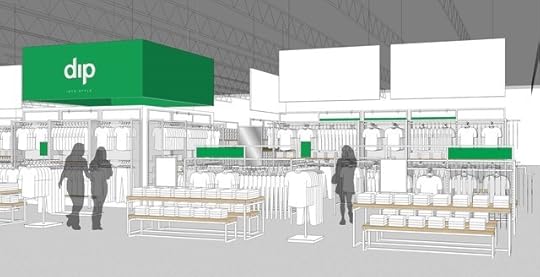
(PRNewsfoto/The Kroger Co.)
Pants aren’t perishable, yet in the ripening world of Kroger’s apparel business, they still won’t be sold online.
As Kroger suits up to enter the higher-margin, highly competitive apparel industry with its own exclusive designer line, one element is notably missing from the plan: the online availability of its Dip private-label products. Indeed, Kroger — which is investing in many e-commerce services such as its ClickList online order pickup — does not sell any apparel online despite having carried clothing in its stores for some time.

(PRNewsfoto/The Kroger Co.)
This point is underscored by Kroger’s recent partnership with designer Joe Mimran to launch the Dip line of clothing for adults, kids and babies. The line will be exclusively available to shoppers at all 300 or so Kroger Marketplace and Fred Meyer stores by the fall. But not online.
The decision to keep its clothes offline could be rooted in what Kroger knows about the behavior of shoppers, who may be more likely to buy clothing in store, on impulse: “We know customers want to quickly pop in and out of the apparel department, not spend hours browsing,” Robert Clark, Kroger’s senior vice president of merchandising, stated in a press release.
That being said, online shopping behavior, and the prevalence of apparel among other grocery sellers, indicates Kroger may risk missing some near-term sales opportunities. As Joaquín Villalba, CEO and co-founder of the retail technology firm Nextail, noted of the situation: Competition is fierce, not just from Amazon but from Walmart, Target and grocers like Aldi.
Joining the Online Apparel Party
Sales should outpace costs, however, and in this area Kroger’s caution may be rooted in canniness. While nearly 27% of consumers prefer to shop for clothing only online, 43.2% prefer to buy clothing in stores, according to news reports, citing a February survey by PYMNTS.com.
Yet those preferences are changing. Online apparel sales consumed 27.4% of the total in 2017, up from 23.5% in 2016 and 20.7% in 2015, according to the Internet Retailer Online Apparel Report, released in late June.
The increase in online clothes spending is likely due to an influx of online-only apparel merchants as well as an expansion into more fashion-forward styles by Amazon and Walmart. Key among these efforts is the adoption, or acquisition, of exclusive private labels.
Walmart, for example, has acquired several retailers, including Moosejaw, Shoebuy.com (now Shoes.com), ModCloth and Bonobos, in a bid to appeal to more affluent online shoppers. Amazon too has launched several private-label apparel lines, as well as the Prime Wardrobe subscription service. Morgan Stanley predicts Amazon will become the top player in the U.S. apparel industry in 2018, surpassing Walmart (Target ranks third).
Why Dipping Into Online Clothing is Different
Selling apparel online presents a specific set of challenges for food retailers, said Nextail’s Villalba, who is also the former head of European operations of Inditex, operator of Zara and other fashion retailers. Key among the challenges is that the grocery shopper is in a different mindset when embarking on a trip compared with an Amazon shopper who starts the trip seeking apparel and then strays to pick up a bottle of olive oil.
Following are Villalba’s thoughts on a few common issues with which Kroger might contend.
What are the challenges to selling apparel online for Kroger?
“Besides the obvious challenge of launching a new line of products, Kroger will need to change the mentality of its people, processes and systems,” Villalba wrote in an email. “A private apparel label is a different business: You need to deliver new products in shorter cycles and allocate and replenish by attribute, color and size according to the store demographics. To succeed online, it’s critical that Kroger can ship online orders from their stores. This requires having accurate visibility of stock levels across the entire store network.”
What are the risks of not selling its new clothing online, in light of Amazon’s entry into grocery?
“Competition is fierce, not just from Amazon but from key players Walmart and Target, which have strong apparel offerings online. Kroger has also been facing stiff competition from more traditional grocery chains, such as European stalwart Aldi, which has been making steady gains in the U.S. By selling apparel online through a partnership with Joe Mimran (who has worked with the grocery chain Loblaw previously), Kroger can not only expand its product set, but also capitalize on the higher margins that apparel typically brings compared to groceries.”
What would you advise Kroger or any supermarket entering apparel to do?
“Getting right the basics of buying, allocating and replenishing is crucial for success. As the retail sector continues to implement new ways to attract customers — particularly in light of Amazon’s growing dominance — Kroger will need to have the right systems and technologies in place to ensure planning and forecasting is adequate for the complexity of selling apparel. From keeping the right inventory at SKU level (sizes and colors) to staying (up to date on) on track of the top trends, Kroger will need to react fast to real demand, make data-driven decisions and automate processes where possible to deliver a seamless customer journey in this new apparel offering.”
To this last point, Kroger already is planning to simplify its retail inventory. Dip will replace more than a dozen of its private-label clothing brands, the company said.
But Kroger shoppers won’t find Dip or any of these brands online; not in the near-term, anyway. We can order bananas, milk, even fresh fish at Kroger.com, but perhaps not until people start referring to the supermarket chain as Kro-Jay will such offerings be a reality. Kroger is smart to keep its focus on food, and shoppers are likely better off.
This article originally appeared in Forbes. Follow me on Facebook and Twitter for more on retail, loyalty and the customer experience.
July 20, 2018
Etsy Has Raised Its Artisan Fees: 5 Ways In Which The Shopper Experience Could Change

(Photographer: Andrew Harrer/Bloomberg)
Who’d have thought that 5% of a $25 baby’s crown or taxidermy duckling could add up to so much angst?
When such curiosities are sold on Etsy, as they are, 5% also adds up to new revenue and operational opportunities for the online artisan marketplace, and therein resides the conundrum. On July 16, Etsy will up the fee it charges its 2 million selling vendors to 5% from 3.5%. It also will begin charging a 5% fee on all shipping costs, which it previously had not done.
If Etsy artisan sellers are willing to absorb the fee hike, as many are deliberating, it could translate to $60 million in revenue for Etsy. Etsy plans to use some of that money to improve the experience for its 2 million or so sellers. Specifically, it said the added revenue will help underwrite investments in marketing, customer support and other services.
“We’re planning to invest even more in bringing buyers to Etsy, building seller tools, and improving your seller experience,” Etsy wrote on its blog page, in announcing the change.
But how will these efforts benefit Etsy customers?
The Art of Money-Making
Etsy has grown substantially since its founding in 2005. Its 35 million active shoppers helped generate gross merchandise sales of $3.3 billion in 2017, up from $1 billion in 2005, it states in a recent shareholder presentation. Revenue, generated from payment fees, promoted listings, labels and other seller expenses, rose to $441.2 million from $365 million, according to its annual report.
With the increased fees, Etsy boosted its 2018 gross sales outlook to as much as $3.9 billion from $3.84 billion. It revised its revenue guidance to as much as $591 million, from a range of $538 million to $547 million.
In addition to the revenue generated by fees, Etsy is offering optional monthly subscription packages that will provide members access to a suite of new tools geared to different stages of growth. The “plus” package, at $10 a month (it will jump to $20 in January 2019), includes the ability to customize one’s online shop, discounts on shipping boxes and provides 15 listing credits a month to use toward advertising on Etsy’s promoted listings.
Members who opt out of the subscription still can use tools designed to start and manage their online shops.
Crafting Change: 5 Shoppers Might Notice
Less evident is how these changes will improve the experience for the millions of people who shop on Etsy. Based on the new fee structure, and the ways the fees are expected to be used, here are five possible benefits.
1: More competitive prices. Some Etsy vendors told USA Today, as well as the Etsy bulletin board, that they might have to raise prices. This could trigger competition among those who target similar shoppers, however, and result in special offers and incentives. Etsy said it underwent significant seller outreach in advance of the fee increase, indicating that its most active sellers are OK with the figure and the proposed reinvestments it would enable, including around-the-clock help-center access for sellers.
2: Artisan flight. Shoppers’ favorite artists might jump ship (alternatives include Shopify, Amazon Handmade, eBay, Zibbet and Bonanza). Liz Lamoreux, who operates the shop Soul Mantras on Etsy as well as her own Shopify spot, said the fee increase makes sense from a business perspective, but she’s not sure she would receive more in return for the increase. “I am actually more likely to move my business completely from Etsy than raise my prices dramatically because it is challenging to compete with people on Etsy who aren’t charging enough already, and Etsy is very quick to recommend other shops to buyers,” she wrote in an email. Etsy is aware of the risk. It stated in its investor presentation that it expects some seller churn, particularly because it has never raised prices before. Other options are not necessarily less expensive, however. Amazon charges 15% commission and a $1 minimum referral fee, which is more than twice Etsy’s fees before the hike.
3: Easier searches. In its presentation to investors explaining the fee, Etsy hints at sharing its data with sellers, in part to make the shopping experience easier. “We’re committed to giving our sellers the data they need to make smart decisions. In 2018, we’ll be sharing more insights into what Etsy buyers want and new tips and advice on optimizing search.” Further, the optional subscription packages are designed to help vendors at different stages of their business life cycles.
4: Etsy screenings. With part of the rate increase, Etsy plans to boost its marketing spending by at least 40%, to $110 million in 2018 from $78 million in 2017. That marketing budget will include TV advertising and a guest position on the upcoming crafting competition show “Making It,” which will premier July 31 on NBC. Etsy trend expert Dayna Isom Johnson will be among the judges on the six-part series, which will be hosted by Amy Poehler and Nick Offerman.
5: Creative shipping and pricing. Etsy said it’s implementing the 5% shipping fee to promote transparency. Sometimes sellers “hide” part of a product cost in the shipping fee, the company explained, so the product appears less expensive. By extending its fee to shipping, Etsy is ensuring the seller pays the same no matter the breakdown. However, many shoppers are put off by higher shipping fees and might be more likely swallow a $6 fee on a $25 order than a $10 fee on a $21 order. Other creative alternatives, such as flat-rate shipping or free shipping with minimum order sums, could encourage larger single purchases. Etsy also plans to introduce shipping labels in the U.K. and explore opportunities in other countries.
These efforts are likely designed to eliminate barriers to selling — assuming Etsy artisans find that the higher fees will buy them a better merchandising model. After all, shoppers might be willing to pay extra to get that Scandinavian Viking knife, but not too much extra. And Etsy likely knows, as do its millions of artisans, there are other places shoppers can go to find such treasures.
This article originally appeared in Forbes. Follow me on Facebook and Twitter for more on retail, loyalty and the customer experience.
July 16, 2018
Amazon Shrank The Shopping Trip; Can You? 3 Ways To Get More Out Of Micro-Trips
Thanks to Amazon and Whole Foods, a new kind of locker talk could be sweeping the grocery sector, and it centers on how much can be bagged in a few-minute window.
Micro-shopping trips, defined as trips that take less than five minutes, are becoming increasingly common thanks to grocery services that let customers order online and pick up in-store. The development made national news when such trips were reported to have climbed 8.7% at Whole Foods stores after Amazon acquired the grocery chain in August 2017, according to research by data-analyzing firm InMarket. The increase is attributed to its Amazon Lockers, where shoppers can pick up preordered items.
These super-short trips can result in higher-proportioned revenue because shoppers who place pickup orders, encouraged by the prospect of a quick in-and-out visit, remain prone to split-second purchase decisions.
“As good as delivery is getting — one-day delivery, sometimes one-hour delivery — that still can’t compete with the one-second immediacy of being in store and picking up that avocado … because I thought about it in that moment,” explained Todd Dipaola, chief executive and founder of InMarket.
This explains why retailers from Walmart to Kroger are adding pickup options to attract time-strapped shoppers.
Big Little Deals
Evidence that shopper lockers and similar pickup options lead to shorter trips exists in the breakdown of micro-trips at Whole Foods. Micro-visits at stores with Amazon Lockers rose by 11%, according to InMarket. At stores in the same cities without lockers, such trips rose by 7%.
It counters what retailers strive for, which should be longer trips, but when shoppers have at their fingertips the means to shop wherever and however they want, food sellers are forced to acquiesce. However, smart merchants can find advantages in the micro-trips, from more efficient store formats to improved targeted marketing.
Consider: 34% of shoppers who use click-and-collect shopping features (order online, pick up in-store) buy more than intended, according to research by WSL Strategic Retail. More important: 89% of those who use it are satisfied with the experience, largely because of the convenience.
How big a segment is this? Right now, about 40% of U.S. shoppers use click-and-collect for groceries, according to Nielsen research, and the figure is expected to increase as the service becomes more available. Nielsen and the Food Marketing Institute estimate that Americans’ total online grocery spending will reach $100 billion between 2021 and 2023.
Walmart Towers Over Convenience, Target and Kroger Click On
As click-and-collect options expand, shopper loyalty shifts from brand to service, which often means ease. Among the services aimed to attract shoppers:
Walmart Towers. In the first quarter of 2018, the superstore chain generated nearly $3.2 billion in e-commerce sales, according to its earnings report, and it is prioritizing online sales growth over that from new stores. Walmart operates 1,100 online grocery pickup locations and plans to add 500 pickup kiosks, or towers, by the end of 2018. It installed nearly 200 of the towers, which shoppers access by scanning barcodes into the kiosk computers, in 2017.
Kroger’s ClickList. Online sales rose 66% in the first quarter of 2018, Kroger reported, crediting its ClickList in-store pickup service. The chain is even retrofitting some stores to accommodate ClickList, which enables users to retrieve orders at designated drive-thru areas. Among its features is a “favorites” list that tracks a shopper’s most commonly purchased items for faster reordering.
Target Drives Up. Target is aiming for micro-parking with its Drive Up service, which it recently extended to 270 locations in the South. Through the app-enabled option, customers can place orders and wait to have their items brought directly to their cars by a store team member. Orders arrive within two minutes of the consumer pulling into the store parking lot.
The 5-Minute Window Is Open for Business
But how can a parking lot encounter, or any of these designated pickup options, translate to added purchases? It all hinges on understanding what the shopper is trying to accomplish.
Here are ways merchants use what they offer to better cater to shoppers in a five-minute window.
Be complementary. In addition to tracking frequently ordered items, Kroger can change suggestions week by week based on the items its ClickList shoppers purchase. With this history, it can alert shoppers if they will soon need to replenish detergent or benefit from complementary products. Promotions sent while the shopper is online can translate to larger digital baskets, while special promotions timed for at-store pickup can encourage the shopper to run in for a discounted item (particularly when those items are near the pickup area and can be easily retrieved).
Shorten other causes for a trip. Shoppers do not always enter a store to pick up an order or even fulfill a list. Sometimes they have to return or exchange a purchase, grab a cup of coffee or simply use the restroom. Beauty vending machines that sell lipstick, cologne, shaving items and hair accessories can be placed by the restroom (two birds; one stone). As for transforming the pesky return process into an easy, quick shopping trip, Walmart’s Mobile Express Returns app allows shoppers to make super-fast returns in dedicated express lanes — and it gets them into the store, perhaps to buy a few dinner ingredients.
Cover the last foot. This is where retailers really are tasked with understanding the shopper’s pain when picking up an online order, because they often have a lot going on. If a consumer is saddled with kids who are hungry after a day at school and a lengthening mental to-do list, she simply does not want to traverse the store for another freaking thing. So retailers can bring the things she needs to her. Nearby grab-and-go snacks, prepared meals and even wine could find their way into her bag — if an easy payment option is available.
Necessary for any of these efforts to work is understanding the shopper’s pain points and remembering that while convenience is essential for micro-tripping, not all shoppers insist convenience be fleeting. Lockers may help retailers bag sales, but they won’t capture loyalty — that takes locking in on shopper lifestyles.
This article originally appeared in Forbes. Follow me on Facebook and Twitter for more on retail, loyalty and the customer experience.
July 10, 2018
The Amazing Retail Revival: How Joann, Office Depot (And Even Nordstrom) Are Staying Relevant
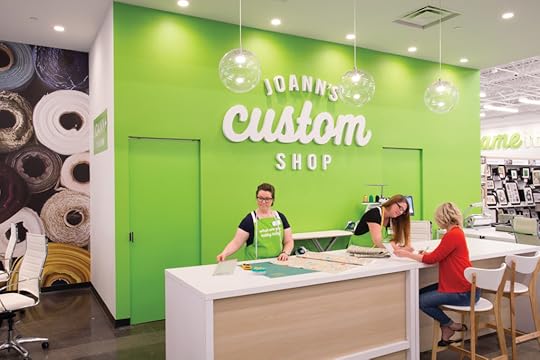
(Photo: Business Wire)
Joann is trying to prove that 75 is the new millennial.
The sewing and fabric chain, once a fixture at strip centers, has made a sharp turn on the path to what many might have thought was obsolescence and is remaking itself. New technology, new creators’ studio, new target market. The old girl apparently has some fight in her, and she’s putting it to use.
And she’s got company. Several old-school merchants, in categories ranging from shoes to office supplies, are remaking themselves in a bid for shopper relevancy. Sometimes it’s through highly specialized online-only sites, sometimes through niche services and occasionally, as in Joann’s case, through total reinvention. But they all seem to follow a similar life cycle: Their model peaks, they cut out or minimize the middleman and then find new life in a new form.
Regardless of the life cycle stage, in each case, these merchants have reidentified their core markets. Here’s a look at a few of them.
Joann’s Cut At Recreation
Following 18 months of intensive research, the chain has unveiled its concept store in Columbus, Ohio, combining elements of community building and technology.
Among the key features is a creators’ studio, with a Starbucks counter, for classes and social events such as birthday parties and Girl Scout activities. Also featured are touchscreen kiosks showing Pinterest craft projects, with instructions, that can be personalized by user.
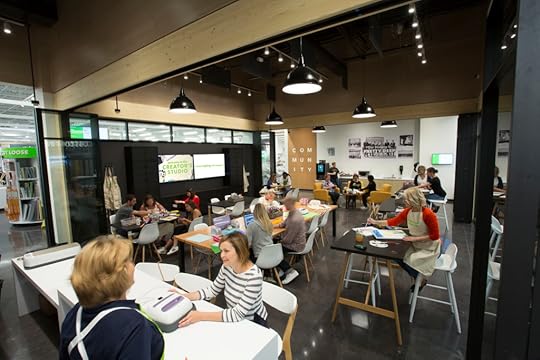
(Photo: Business Wire)
But the focus is not limited to in-store activities; it recognizes and eliminates common purchase pain points. The store offers rentable sewing machines and crafting tools for the crafting curious and a service called Sew & Go, through which customers can hand off their projects to seamstresses. There are personal shoppers and a no-wait fabric “cut bar,” where shoppers can drop off their pre-measured orders and selected fabric and receive mobile alerts when they’re ready to be picked up.
Joann also is recognizing professional crafters and makers who sell their products by offering the chance to livestream classes from the studio as well as display their work in in-store installments.
Office Depot Out Of The Box
Office Depot identified its emerging core market in new business owners and entrepreneurs, many of whom seek the expertise of “Biz Pros.” Its BizBox concept, at 14 locations in Texas, is an all-in-one-box suite of services and networking opportunities where visitors can work, build and collaborate.
The stores, in Austin, include flex workspaces where customers can seek face-to-face expert advice from BizBox professionals in “consulting hubs” and network with fellow entrepreneurs and business owners. There also are designated “Tech Zones” where professional tech support staff can help with computer snafus, smartphone repairs and other common challenges.
The service-led concept, which is planned to expand to other locations, is designed to free up business owners from workaday hindrances so they can focus on innovation and growth. Office Depot calls it a step toward a “strategic transformation from a traditional office products retailer to a broader business services platform.”
Those outside of Texas can access BizBox.com’s back-office tools, services and expertise. These include logo and web design, email and social media campaigning and legal and financial services.
July 3, 2018
Value-Unique Services: 3 Ways Domino’s, First Watch And Others Serve Customers
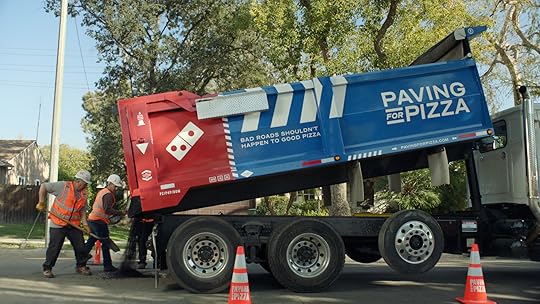
Domino’s Pizza
Retail technology has convenience going for it, but when was the last time a merchant did something unselfish for you? Like shelter you from the rain, or shield you from potholes?
At a time when shoppers may be more likely to encounter potholes than service employees, more retailers are offering customer value in wholly abstract ways. Take Domino’s Pizza, which in an effort to ensure smooth delivery, is filling potholes in its “Paving for Pizza” campaign. It’s one of several examples of retailers redefining the shopper experience.
They need to. The escalation of technology-enabled self-service in retail is diminishing opportunities for shoppers to personally interact with retail employees, and that is beginning to change what shoppers value in their experience. Forrester recently predicted that retailers will reserve employee engagement for more complex situations that require “diagnosis and empathy.”
All of which suggests we reconsider what customers really expect from service. Instead of the old go-to of value-added, which just raises shopper expectations for more unrequested “stuff,” some retailers are considering empathy-added services. The premise is that some of the most memorable experiences are based on acts of kindness and generosity, not necessarily something of financial value.
Chip Bell, the author whose best-selling books include “Kaleidoscope: Delivering Innovative Service That Sparkles,” describes it as value-unique service — an out-of-the-ordinary gesture or sensory experience that instills in the shopper an “appropriate but unexpected positive memory.” Often, he said, employees are behind these moments.
“When service people are asked to give more, they think, ‘I’m already doing the best I can,’ ” Bell wrote in an email. “But if asked to pleasantly surprise more customers, they feel less like worker bees and more like fireflies. And when employees get to create, not just perform, they feel prized.”
In return, he said, shoppers are richly stirred.
3 Unique Needs
Stirring up a shopper’s emotional loyalty takes creativity, but it doesn’t have to be overthought. The Domino’s campaign is pretty straightforward. Potholes are a nuisance to drivers. Pizzas are delivered by cars. Smooth roads make for happier Domino’s customers.
All of these concepts align with the three characteristics required to create value-unique services, Bell said:
It has to be unexpected. Mints are standard, but sweepstakes are inspired. At the Hotel Monaco in Chicago, guests will find a range of surprise treats on their pillows, from Pixy Stix candies to lottery tickets.
It has to be simple. This means knowing what the shopper values. A good example is taking care of a task that is difficult for the customer but easy for the sales team, such as programming the radio stations in a customer’s new car based on the trade-in.
It has to fit with the brand. However, retailers shouldn’t assume price or product determines need. Atlanta-based Miller Brothers may be an upscale men’s clothing store, but its owners recognized many of its best customers bring kids and grandkids, Bell said. They placed a gumball machine at the store entrance with a bowl of pennies, and all generations are happy.
Need An Umbrella — Or A Purrrfect Shopping Companion?
Bell shared other examples. At the First Watch Restaurant in Overland Park, Kansas, the manager bought a bunch of umbrellas for customers faced with unexpected rain. He attached his business card to each umbrella and placed them at the front door alongside a sign that read: “If you need an umbrella, please take one. If you bring it back, we’ll give you a free cup of coffee.” Almost every borrowed umbrella is returned.
Value-unique service does not require a big investment, however, as long as it’s unexpected, simple and fitting. At Nicholson-Hardie, a nursery and garden center in Dallas, two large calico cats, known by their business cards as The Rat Pack, can be found lounging about, Bell said. Some merchants, such as Dep’s Fine Wine and Spirits in Fort Thomas, Kentucky, and Oconee Cellar in Greensboro, Georgia, have invited customers to taste and rank specially blended spirits. The highest-ranking were sold exclusively at their stores and numbered, and the co-creators sometimes got first dibs at purchase.
Then there’s the cost-intensive effort by Domino’s Pizza, which is collaborating with municipalities to help repair roads that affect its customers (so far, it’s working in Bartonville, Texas; Milford, Delaware; Athens, Georgia; and Burbank, California). Shoppers who want their roads paved and their pizzas intact can enter their zip code for consideration at pavingforpizza.com.
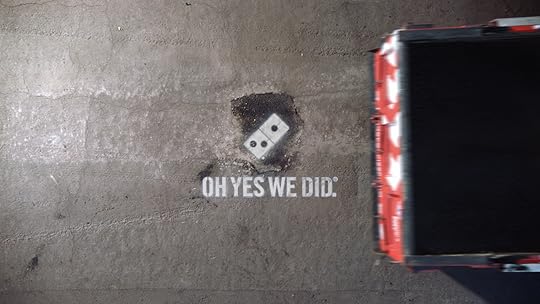
Domino’s Pizza
Domino’s customers no longer have to deal with employees when ordering, but they can if they want, simply by phoning in their orders. Regardless, Domino’s and the other merchants, by volunteering to help their customers out in unrequested and therefore unexpected ways, are elevating what they represent in their customers’ lives.
That fills a pretty big hole.
This article originally appeared in Forbes. Follow me on Facebook and Twitter for more on retail, loyalty and the customer experience.
June 22, 2018
7 Ways Gen Z Shoppers Are Different From All Others — And None Includes Technology
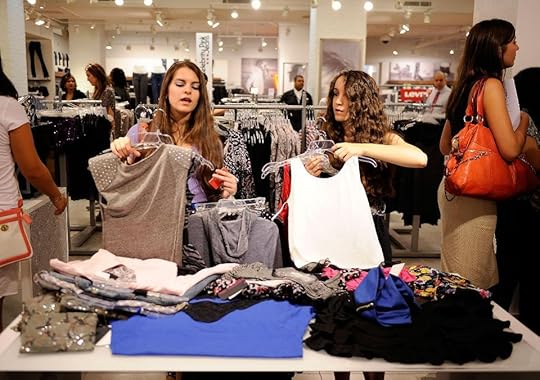
(Photo by Jemal Countess/Getty Images)
Don’t overvalue their love of technology too much. Left to their own devices, today’s 18- to 23-year-olds may devise a shopping experience that transcends digital engagement — and they’ve got $44 billion in spending power to inspire it.
That makes the members of Generation Z, the oldest of whom were born in the mid-1990s and the youngest in the early 2000s, difficult to undervalue from a retailer perspective. At more than 74 million members, Gen Z is expected to account for 40% of all U.S. consumers by 2020, according to Adweek. As they grow, their spending likely will as well.
Here are seven descriptors that define Gen Z, none of which include “digital.”
Diverse. Roughly half of the Generation Z population is nonwhite, according to a report in Forbes, citing the U.S. Census Bureau. Specifically, 22% are Hispanic and 15% are non-Hispanic blacks — the largest percentages of any generation, according to research by Nielsen. This means these young consumers are more familiar with and open to different cultures and customs, translating to fewer barriers to purchase (including among Caucasian consumers). Wariness of the unfamiliar is more likely to have been replaced by curiosity and inclusion.
2. Savers. Perhaps the 2008 recession slapped the frivolity out of them, because members of Gen Z tend to be more financially conservative and risk-averse, meaning they are less willing to take on major debt. One-third have bank accounts in their names, and another third — likely teens — share accounts with their parents. Nearly half, 48%, prefer to do their banking face-to-face with a teller, a possible indication that saving money is important enough to them to require personal interactions that support a sense of security. Retailers, think interest-free layaway.
Bargain-hunters. Those who are trying to save money also tend to be cautious spenders, Gen Zers included, and they’ll shop big-box stores if necessary. Roughly 55% of the Gen Z population is increasing the amount of time spent in dollar stores and mass merchandisers, according to research by the global consulting group WSL Strategic Retail. About 40% say they’re spending more time in consignment shops and supermarkets. When it comes to specific brands, they prefer Walmart, Ulta and local grocery stores, at 56%, 48% and 45%, respectively.
Commute-averse. Neighborhoods and their shopping options mean less to Gen Zers than does the work commute. In choosing a place to live, 34% said their decisions are not at all influenced by neighborhood amenities such as shopping centers, according to the Zillow Group Consumer Housing Trends Report 2017. That compares with a quarter of total renters. Instead, members of Gen Z prefer a short commute to work, and just 17% require being in a preferred neighborhood, compared with 39% of the total population. Retailers should increasingly cross-analyze the spending power of employment hubs to residential communities.
Vegan. It seems small, but subtle preferences can reveal broader beliefs and passions. Nearly one-third (29%) of consumers ages 18 to 21 say the word “vegan” on products makes them more appealing. This compares with just 14% of baby boomers, according to a May study by the market research firm Morning Consult. The younger generation’s preference for animal-free goods likely extends to non-food products, such as pet-safe household goods and non-leather apparel. It may be worth testing animal-friendly aisles or departments.
Mall-agnostic. Gen Z shoppers could represent a critically well-timed opportunity for shopping malls. Of shoppers ages 18 to 29, which includes a large segment of Gen Z, 35% said they shop at malls less now than they did five years ago, but 45% said they shop them more, according to a January survey by Morning Consult. That’s a close but promising split, especially when considering 54% of all adults said they shop at malls less often (19% more often). Youth-targeted promotions, particularly of the cost-savings kind, would likely be well received.
Loyal-ready. Loyalty programs that offer benefits such as free tailoring or special events are largely lost on Gen Zers. Just 30% say a loyalty program makes a store special to them, according to Ernst & Young. That compares with 45% of millennials. When it comes to making reward programs special, 31% of Gen Z shoppers prefer members-only events, compared with 44% of millennials, while 80% of Gen Zers chose free delivery (74% for millennials). Retailers trying to appeal to this segment using loyalty programs should focus on the practical perks.
The old adage laments that youth is wasted on the young. The future won’t be. The youngest generation of shoppers will pass up poorly conceived retail notions and experiences as readily as those shoppers before them — regardless of technology.
This article originally appeared in Forbes. Follow me on Facebook and Twitter for more on retail, loyalty and the customer experience.
June 18, 2018
Fraudsters Are Posing As Retailers And Trying To Friend You: How To Stop It

(Photo Illustration by Thomas Trutschel/Photothek via Getty Images)
It had almost all the elements of a smart promotion. With the release of its iPhone 8, Apple offered Facebook followers the chance to win the pricey device if they liked its “iPhone 8 Official” Facebook page. Thing was, it wasn’t Apple.
It was one of 532 fraudulent social accounts designed to trick Apple fans into checking into a fake website, where they’d provide their passwords and/or download malware. Each fall, with the release of a new iPhone, these scams resurface.
Nearly one in three retailers reported a loss of revenue due to cyber attacks in 2016, according to Cisco, and 54% had to manage public scrutiny due to a security breach. What’s the cost? Across industries, in more than 50% of the cases in 2017, these cyber attacks resulted in financial damages of at least $500,000, according to the Cisco 2018 Annual Cybersecurity Report.
In particular, cyber intruders are taking advantage of social media, often by creating imposter accounts that impersonate brand pages, said Sam Small, chief security officer at the cyber security firm ZeroFox, which identified the counterfeit Apple accounts.
“When theoretical risks become tangible threats, consumer confidence can plummet — and is difficult to re-instill,” Small said in an email. “This can affect not only breached parties, but the broader market segment as well.”
Small explained how cyber criminals use social media networks and brand awareness to creep into posts and “poison the waterhole,” and how retailers and shoppers can protect themselves.
The Guise and Guile of Social Imposters
Money isn’t the only motivation for digital villains. Attackers also could be angling to deliver malware or ransomware, commit identity theft, perpetuate fraud or scams, hijack computers — or simply to damage a brand.
The primary technique for doing this, Small said, is impersonation — either directly or via brand representatives like customer service agents. Attackers use fraudulent accounts to insert themselves into ongoing conversation threads — a tactic called threadjacking — to engage directly with a brand’s followers or to hijack hashtags and search terms, creating a poisoned-waterhole effect.
And they take care to make those fraudulent accounts look authentic. For example, cyber criminals will duplicate signature markings or cues that identify individual networks, such as Twitter’s blue “verified” checkmark.
“In combining these phony cues with convincing display names, similar account handles and copy-and-pasted brand images and bios, impersonation accounts typically appear incredibly convincing to everyday, unsuspecting users,” Small said.
Seeking Protection: 7 Tips for Brands and Their Followers
When cyber thieves strike, the damage can be extensive — and embarrassing — for both retailers and shoppers. Here’s what Small suggests each can do to avoid susceptibility.
3 Retailer Tips
Reinforce the features of your identity. Cyber criminals like to duplicate the markings of different social networks, but those copies will have “tells.” It’s up to brands to call them out by clearly identifying and promoting the characteristics that define their official social platforms, such as logos or language use. They can do this on their websites or via cross-platform promotions.
Protect conversations. There’s a category of software products and services that can help social media management teams protect against threadjacking. These products monitor and collect analytics on brand mentions, discussions and people, such as brand executives or ambassadors. Other products help organizations automatically identify and fix specific security and brand risks, managing much of what would otherwise be a manual process that requires security domain expertise.
Remove the junk. If suspicious accounts or information are spotted, brands can report and request the removal of impersonation accounts and content, such as trademarks or terms of use. Each major social network has its own mechanisms for reporting content that violates the law or terms of service, though the quality, response times and other factors vary. Organizations that find the process burdensome can hire third-party services.
4 Consumer Tips
Recognize the look. We may know the Facebook thumbs-up icon and Twitter bird, but might not be that keenly aware of each platform’s “voice” and other icons. Shoppers should become familiar with and pay attention to the various elements social media platforms use to convey identity, authenticity and verification, such as the circular profile photos on Instagram.
Watch those links. Caution should be applied when following shortened links from unfamiliar sources or even from familiar brands whose accounts have not been vetted. Similarly, consumers should be careful about engaging with content from familiar brands they may come across in their day-to-day activity but do not follow — content discovered through search terms or advertisements, for example.
Second-guess your “friends.” If a friend or family member sends anything that feels uncharacteristic, such as a discount link for a retailer she or he is unlikely to promote, ignore it. Then check with the friend directly, but not through the social network. Use text, email or even the phone.
Detect loose threads. Consumers can detect threadjacking, too, by carefully reviewing new comments in an ongoing conversation and monitoring for repetition or unusual language. They can ensure the information and links are legitimate by Googling them to see if anything is flagged as a scam.
Lastly, brands and their followers shouldn’t underestimate the peril caused by attack fatigue. When undetected, impersonated accounts force everyone to discern the real from the fake, which becomes burdensome. It also reinforces both general and brand-specific skepticism, Small said.
“In aggregate, this undermines trust in the authenticity of content and, more specifically, in the targeted brands’ marks and messaging,” he said in his email. “With increased uncertainty and distrust come reduced user engagement and an increase in abandonment.”
This article originally appeared in Forbes. Follow me on Facebook and Twitter for more on retail, loyalty and the customer experience.
June 14, 2018
15 Revelations From Trader Joe’s Podcast, From The Parking To Deer Stew
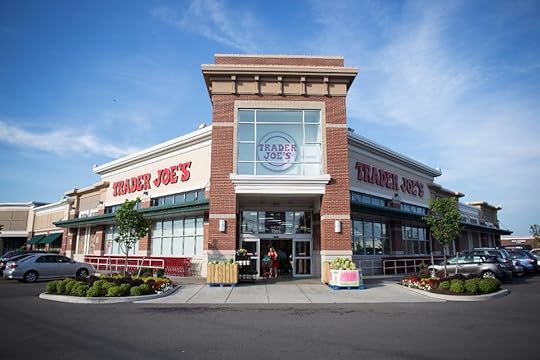
(Melissa Renwick/Toronto Star via Getty Images)
Ask Dan Bane about the future of Trader Joe’s and he’ll measure its potential in captains and mates.
“We’re targeting to open 30 to 35 stores a year in the 48 states,” the CEO of the independent grocery chain said. “The only thing that holds us back is having the right number of captains and mates. We won’t open a store just because we can. We want to open a store that’s run by the right kind of people doing the right kinds of things.”
And so was dispensed another morsel of wisdom in Trader Joe’s recent five-part podcast, “Inside Trader Joe’s.” It’s the latest example of a retailer using podcasts to give customers a look behind the magic curtain (Walmart too has a podcast, called “Outside the Box”).
It’s also clever marketing, providing enough intrigue to entice consumers to visit the chain for a first (or 50th) time. Here are 15 insights from the series, ranging from how Trader Joe’s gets its food to the CEO’s other day job.
1: The crew really does travel far, far away for products.
Trader Joe’s does not wait for suppliers to provide lists of potential products. It sends its own buyers into the field, and far afield, to see what they can find. Lori Latta, vice president of product innovation, locates people in chosen countries to expose her to interesting traditional foods, like mango and sticky rice spring rolls. Francophiles take note: During the podcast, she was in France at the world’s largest madeleine factory.
2: Bananas are 19 cents because a day can make a difference.
Trader Joe’s didn’t always sell its bananas at 19 cents apiece. It used to sell them by weight, prepackaged in clusters of four or five, until Bane observed a shopper eyeing the packages but not taking one. He asked her why and she told him, “Sonny, I may not live to that fourth banana.” They’ve been 19 cents since.
3: One of its best sellers was a rush job.
Mandarin Orange Chicken, one of Trader Joe’s best-selling items, is the product of a popular California chef. The team was so excited to introduce it that they ran a front-page story in the company’s Fearless Flyer newsletter. Thing was, the packaging wasn’t done. So they hurriedly bagged the entrees in plastic and slapped stickers on them. An associate said it looked like a “Ziplock bag of leftovers.” But it worked. Mandarin Orange Chicken rated as the favorite in nine Trader Joe’s Customer Choice Awards.
4: It operates on Japanese ideology.
Kaizen is the Japanese business philosophy of aiming for continuous improvement in working practices and efficiency. At Trader Joe’s, it means everybody in the company owes everybody else a better job, every day. That’s its performance measure — not budgeting. “We just expect our stores to do a little bit better every year,” Bane said. “They create their own targets. And it’s really paid off some big dividends for us.”
5: Food tastings are “Darwinian,” and potentially brown-bagged.
The tasting kitchen, where all Trader Joe’s products are tested, is a no-nonsense environment of fluorescent lights and white countertops, shrouded in secrecy. “We want the products that succeed to go through this ultra-Darwinian exercise, to say that they could stand up even to that harshest light of critical evaluation,” an associate explained. It also is ultra-confidential. When a reporter was cleared to visit, all tasters had to wear paper bags over their heads.
6: It use to sell sandwiches by the inch, not yard.
Back in the early days, Trader Joe’s sold a lot of wine and lots of sandwiches, which were made in the stores at a deli counter. But rather than half or whole, small or large, it sold its sandwiches by the inch. Associates don’t know if anyone ever asked for an inch-long ham on rye, but if a foreigner had, they’d have had to convert it to centimeters.
7: It’s had a trio of CEOs.
In its roughly 50 years of operations, Trader Joe’s has been guided by just three CEOs. Founder Joe Coulombe led the company for the first 30 years. When he retired in 1988, John Shields took over and expanded the company to 150 from 19 stores, and well outside its home of Pasadena, California. In 2001, Dan Bane took the helm and has overseen the expansion to roughly 475 locations.
8: It owes its success (in part) to granola.
In the beginning, the store was not a success. Some employees took turns wearing a gorilla suit to nab shopper attention. Then, in 1972, Trader Joe’s introduced its first private-label product: granola. (This was California in the early ’70s.) After the granola, they never looked back. Private label now accounts for 80% of all Trader Joe’s products.
9: It was into coconut oil before you were into coconut oil.
Years ago, the Trader Joe’s team got fired up about selling coconut oil. Problem was, no one was fired up to buy it. It took a long time to sell all the product and the lesson stung. After a few years passed, customers began asking for coconut oil. Each time the idea was brought to the tasting kitchen, the panel rejected it. But customers persisted, and it became a hit.
10: Customers don’t cotton to all new products (oh deer!).
Trader Joe’s gave coconut oil a second chance, but not deer soup. Its cream of venison, inspired by fare from the northernmost region of Finland, was a flop — even the fancy gold container failed to persuade shoppers. Another miss was cottonseed butter, an idea inspired by a peanut crop failure that led to a peanut butter shortage, which led to Trader Joe’s big cottonseed butter fail.
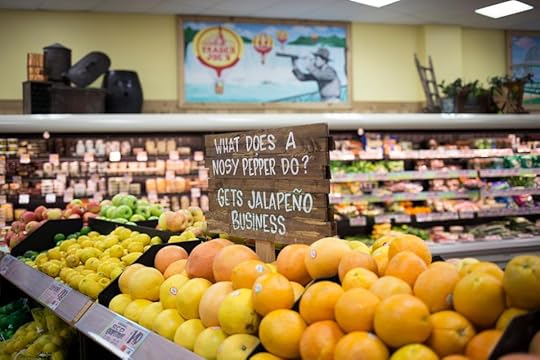
(Melissa Renwick/Toronto Star via Getty Images)
11: Sampling is its most expensive marketing.
Rather than a cube of cheese in a cup, Trader Joe’s serves samples of fully prepared dishes that its shoppers can duplicate at home. You might find corned beef brisket on pumpernickel with mustard, cabbage and Swiss cheese. Sampling is its biggest marketing expense, but it’s designed to generate return visits by inspiring shoppers to buy several ingredients.
12: There’s nada data.
All Trader Joe’s knows about its shoppers is what they tell its employees, personally — it does not have access to data. For example, the team surprised one 93-year-old regular with a birthday cake at the register. Another regular, particular about the ripeness of her bananas for baking, called one employee every day for updates on how the bananas were looking.
13: The CEO still bags, and thinks about his future every day.
Bane is not above bagging groceries at the store, which is what an unsuspecting shopper found him doing one day. She asked his age and he told her he was 65. When she then asked if he aspired to be anything greater, he said, “No, ma’am.” He carried her bags to the car and declined her tip, but he did take her advice: He looks in the mirror every day and thinks of what he might become.
14: It could have been the next 7-Eleven.
Trader Joe’s roots can be traced to a small chain of Los Angeles convenience stores called Pronto Markets, which Coulombe took over in 1958. After 10 years of selling everything from pantyhose to ammunition, Coulombe decided to give his customers something different. He opened the first Trader Joe’s in Pasadena, California, in 1967. It’s still operating, and has the same parking lot.
15: They know about the parking lots.
Trader Joe’s knows the lots are small, but in many cases the only way to shoehorn a store into a neighborhood is to compromise. Many buildings are retrofitted and the small lots came with them. In some cities, the allotted number of parking spaces is based on the square footage of the store, not customer counts, and that doesn’t always match up.
But it hasn’t kept shoppers away. At Trader Joe’s, the captains and mates, the birthday parties and the orange chicken, are proving to be enough reason to circle the lot. The podcast may now be another.
This article originally appeared in Forbes. Follow me on Facebook and Twitter for more on retail, loyalty and the customer experience.
Bryan Pearson's Blog
- Bryan Pearson's profile
- 4 followers



